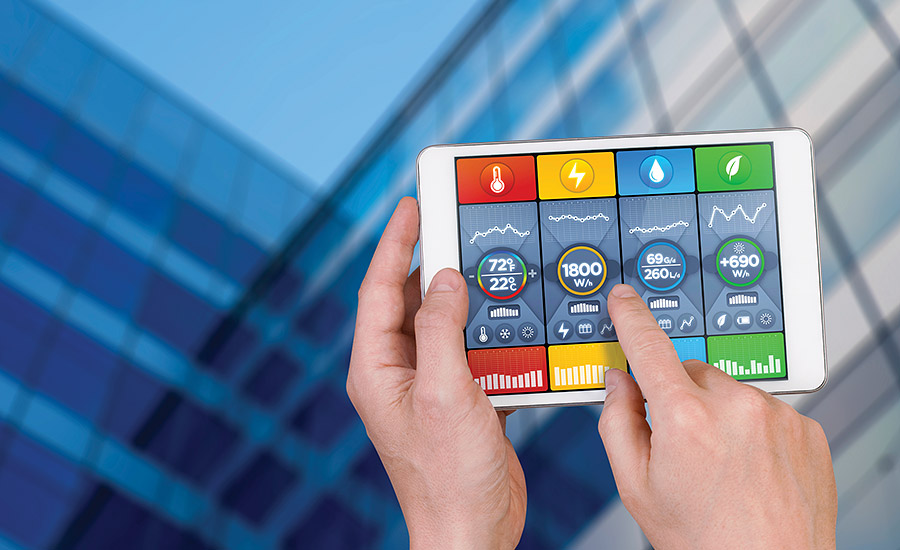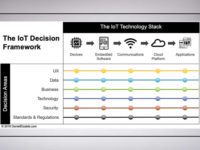Modern buildings are truly amazing structures, with highly complex and integrated building systems that are energy-efficient and sustainable. Whereas many owners, developers, and builders prefer to focus on the external/visual appeal of the building, it is often the “internals” that determine whether the building works for tenants and their customers. To meet this challenge, it is not uncommon to utilize a host of engineering specialty services including HVAC, electrical, plumbing, lighting, fire protection, fire alarm, security, data/communications, and audio/visual to provide the environment and features required.
While a great deal of effort is often expended in the design and construction of smart buildings, the transition to ongoing O&M can leave a gap that can be very difficult and expensive to close. The purpose of this article is to provide some guidelines that can help close this gap, ease the transition when the design/construction teams leave, and develop an environment of continuous improvement that is sustainable.
With respect to maintenance and operations, it has never been more important to invoke a line from Stephen Covey: Begin with the end in mind. It is not necessary to engage the full O&M team from the start of a new project, but their input can lead to better design decisions and lower operating costs. Virtually every building will have some startup issues. The challenge is to clear those hurdles as quickly as possible.
Understanding the Design
Whether you are seeking a special certification, just trying to build an energy-efficient building, or perhaps designing something really unique, the equipment, systems, and technology can present immediate concerns like “Can it be done?” and “Will it work as expected?” Although many ideas and technologies are tossed about like they are proven beyond a reasonable doubt, many have never gotten past the concept stage.
If designing such systems is a challenge for engineers and architects, imagine the challenge they represent to the O&M staff who are given a two- or three-hour training session that starts with the basic assumption that everything will work perfectly!
Getting engaged in the design process for new or critical building systems is a critical first step for the O&M team. In addition to basic accessibility issues, understanding the equipment, processes, and key factors affecting reliability and repeatability are essential if the facility is to be properly maintained.
Documentation
The amount and variety of documentation is prodigious to say the least. From finance, accounting, contracts, invoices, material lists, test reports, construction checklists, TAB reports, commissioning results, etc., each project will typically generate thousands of documents that must be stored, attributed for quick retrieval, and secured. Making the information available to stakeholders is essential for efficient execution and a smooth transition to operations. Problems will arise, and the first step toward resolution is often the supporting documentation. Without clear, concise, and complete information from the many parties involved, it can be especially difficult to recreate the path of “how did we get here.”
For those in O&M, the most important documents start with a comprehensive equipment list, product submittals, sequence of operations, O&M manuals, and as-built drawings. Some of these documents, such as product manuals and OEM documentation, may be readily available on the internet. However, there are many instances where the equipment, installation, and operation may be somewhat unique and require more specifics.
Most projects and construction managers will utilize a software application to help manage the many documents created, submitted, reviewed, revised, and submitted again. These documents are generally grouped and categorized based on the contract and specification number (MasterFormat being perhaps the most common specification formatting system). Unfortunately, this data means almost nothing to the O&M team.
There are several commercially available document management tools available but sometimes a simple spreadsheet with cross references may be just as useful to a technician or engineer trying to track down the necessary documents. Depending on the scale and extent of operations, there may in fact be multiple solutions to cover all the documentation.
Given the state of today’s technology, there should be no question as to whether the documentation should be electronic. With electronic signatures and revision tracking, all documents should be provided in electronic format as PDF files. In some cases, however, the documents should be provided in native format as well, including the equipment list (typically a spreadsheet) and as-built drawings (vector renditions).
Equipment/Asset Identification
Most facility management organizations will utilize a computer software application to manage their equipment. In almost all such applications, the equipment ID is the key data field that is critical to so many processes such as managing warranties, breakdown, and preventive maintenance. And these applications generally include a mobile solution that works with tablets and smart phones.
The equipment ID shown on the drawings, in the equipment list, on TAB and commissioning reports, and ultimately in the owner’s maintenance software should match exactly. It should also appear in the metadata of appropriate documents. Too often, though, equipment IDs overlap from building to building and items are referenced by size only (VAV boxes and transformers). In some cases such as college campuses, a very detailed methodology has been developed to properly identify all maintainable assets.
The type of equipment tag and the data presented beyond the equipment ID can be just as challenging. Tags often used in construction projects include plastic tape, engraved plastic laminates, metal-etched, and stamped metal tags. The metal-etched tags can also include barcodes or QR codes for even more information.
Given the many different types of equipment and different contractors involved in a project, it can be difficult to create a single naming convention used across all equipment families. For greater consistency, accuracy and lower cost, a single contractor for equipment naming and tagging may be the best solution.
Maintenance Procedures
The OEM recommended procedures for a typical piece of equipment are a good starting point. However, if you stop there, you are missing the forest for the trees. The equipment today is generally much more integrated with other items, controls, and systems.
Let’s take a closer look at a typical air handling unit. Yes, you should start with OEM recommended practices, but that moves you just barely past the starting line. Pressure sensors are installed across both the pre- and main filters. Similar sensors are also installed on the inlet and discharge side of the fan to protect the ductwork. The sensors need to be set to indicate the proper alarm level.
There are also several temperature sensors in the unit and associated ductwork to make sure the unit/internals are operating properly. These sensors need to be checked/calibrated on a periodic basis to confirm that the unit is operating in an optimal fashion. While you are at it, you should also check other sensors such as CO2, humidity, and perhaps smoke detectors installed in the ductwork. Don’t forget the fire/smoke dampers. If they don’t fully open or close, they can be causing the unit to run harder and consume more energy than necessary.
When the unit is running, is the coil getting the recommended volume of water at the right pressure and temperature? Do you know what the right numbers are? Has something changed in the overall building that is stealing water from this unit? Is the pressure drop across the coil increasing? These are all signs/clues about what is going on.
If this is a VAV system, you may have two, three, or more VAV boxes controlling separate zones. Are these operating properly? Is one zone always cold and another hot? These units too need to be cleaned, checked, and calibrated on a periodic basis. Thus, what might start out as a simple AHU preventive maintenance task could in fact incorporate a number of ancillary equipment items and a dozen or more sensors.
If nothing else, today’s equipment generally incorporates a number of sensors/probes that can be used to monitor performance and help predict future maintenance needs. While these sensors are not typically considered maintainable assets, they should be clearly labeled in terms of type of sensor, set points, expected readings, and other critical data elements.
Not every piece of equipment requires an extensive PM plan. Some are relatively inexpensive, do not support critical operations, and can justifiably be allowed to “run to failure.” This strategy can work if you are notified of the failure and can take action to repair/replace the unit, should a failure occur.
For equipment that is more critical and perhaps too expensive to “run to fail,” a detailed PM plan is your best tool to effectively support the equipment. The plan should ideally take a systems approach rather than focusing on specific units or the type of equipment. Finally, and perhaps most importantly, the PM plan must be updated and refreshed to address any unexpected problems and any improvements that might have been initiated.
Developing a solid maintenance procedure is a team effort and requires time in the field — not behind a desk and keyboard. In the end, though, the results can be nothing short of amazing. Yes, the tenants will likely be oblivious to your efforts since everything is working as expected. But it will also reduce your cost by operating closer to the “design point” and experience fewer unplanned events.
Building for the Future
It is very important to develop a long-term strategy reflecting a culture or environment of continuous improvement. These efforts take time, effort, and sometimes money. It does not happen overnight. However, a well formulated strategy will transcend business cycles, changes in management, and technology innovations. It is all about knowing where you are today and making a conscience effort to make things better in the future.
In many cases, it starts with accurate, complete, and consistent “master data” — much of what comes from project documentation. Master data starts with your equipment list and includes things like the manufacturer, model number, serial number, location, key performance characteristics, warranties, and the like. Master data also applies to your documentation, spare parts, employees, suppliers, and vendors. The more you know about each, the more options you are afforded when tough decisions are required. For example, most commodity-type items can be obtained within 24 hours without overnight shipping. The stock levels of such items should be extremely limited and driven by planned maintenance tasks — not emergency requirements.
Do you really know and understand the many different building systems and sub-systems under your control? Does the maze of ductwork make your head explode when you get another “too hot” or “too cold” call? Have you adjusted one parameter to fix a problem only to realize that you created another? These types of problems are all too common in most facilities. A simple approach to these types of problems is to develop a “visual facility” that details the various systems, why they are important, and how they work and are controlled. When posted near the equipment, troubleshooting time can be greatly reduced thereby saving money and improving tenant satisfaction.
There is no doubt that quality maintenance procedures are a key element in building an environment of continuous improvement. The procedures are your standards upon which many other initiatives are built. But have your procedures kept up with the equipment/technology? If you are limited to written procedures, you are ignoring the potential of graphics and even videos to better direct and assist your technicians.
Many of the concepts discussed here are part of a Lean/Six Sigma program which is often associated with manufacturing. However, there are many tools applicable to facilities management and in particular smart buildings. A 5S program (Sort, Straighten, Shine, Standardize, and Sustain) will usually uncover a number of problems that were just below the surface. Kaizen events can be used to develop team work and solve persistent problems. Poka-yoke can be used to mistake proof your operations (and make them safer as well). The concepts behind SMED (Single Minute Exchange of Dies) can be used to improve efficiency and reduce planned equipment downtime. And finally, the visual workplace can be used to explain how systems work and equipment interacts. A good picture truly is worth a thousand words.
Conclusion
Facilities of all types are becoming more complex and integrated — especially as designers try to minimize operating costs and improve tenant comfort and productivity. These smart buildings challenge even experienced O&M professionals. These demands are best met by getting engaged in the design/construction process as early as possible to make sure the transition to operations follows a well-managed path.
Regardless of the type of project and no matter how well planned, it is very likely that some critical items will be overlooked or not fully understood. Examples might be a safety system that is an integral part of a piece of equipment or special control sequence that ties multiple pieces of equipment together. The approaches described herein can be used at any stage of the project to manage these situations and restore order where uncertainty previously reigned.
Creating a culture of continuous improvement within the ranks of the O&M team will serve many purposes, but most importantly it will provide a vision that transcends changes in management, budgets, and technology. Smart buildings can easily turn into “hard to manage” buildings if not for your preparation, planning, and team. ES



